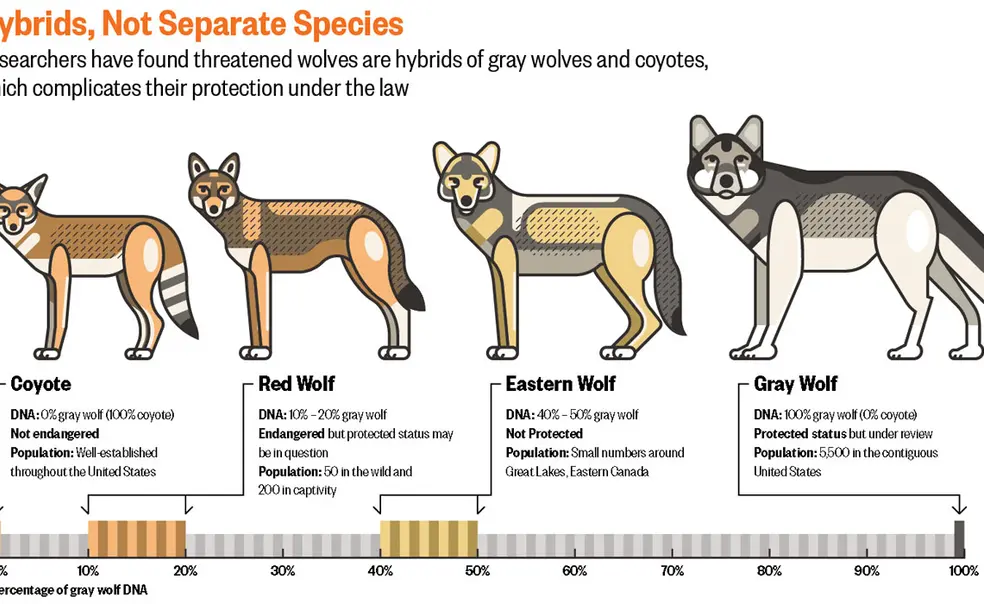Before being hunted to near extinction at the turn of the 20th century, hundreds of thousands of wolves once roamed freely across North America. Today, gray wolves have rebounded to number more than 5,000 out West, but are virtually extinct east of the Mississippi. Only a small population of so-called eastern wolves survives around the Great Lakes and Eastern Canada, along with a pocket of smaller red wolves in the Southeast, which are listed as endangered. Scientists have long questioned whether these are separate species or descendants of a common wolf ancestor. Now, a Princeton scientist has come up with an answer.
Biologist Bridgett vonHoldt examined the genomes of wolves and coyotes across North America and has concluded that the red and eastern wolves are not separate species, but mixtures of gray wolves and coyotes. “There are only two species of wild canines in North America, gray wolf and coyote. Everything in between is on that spectrum,” says VonHoldt. Her findings have major implications for the protection of wolves.
Additionally, VonHoldt has discovered that wolves and coyotes may not be all that dissimilar. Previously, scientists believed that the species diverged more than a million years ago; VonHoldt and her colleagues found they diverged just 50,000 years ago — a blip on the evolutionary timescale. Their similarity has allowed them to interbreed and rapidly adapt to changing circumstances, including deforestation and encroaching urbanism.VonHoldt leads the Canine Ancestry Project, an effort to survey wild canines in North America and Europe to determine how they are related to one another. Working with colleagues around the world, VonHoldt sequenced genomes of 28 different wolves and coyotes and found that eastern wolves were about 40 to 50 percent gray wolf, while red wolves were roughly 10 to 20 percent gray wolf with the rest coyote. Her findings, published in Science Advances in July, could impact conservation. The U.S. Fish and Wildlife Service recently recommended removal of the gray wolf from protected status under the Endangered Species Act (ESA), since its Western population has rebounded. VonHoldt’s study, however, gives support to continuing gray wolves’ protected status, since it shows that its historic habitat spans the entire country, including the Great Lakes region, where eastern wolves still are threatened.
The analysis, however, complicates the protected status for the red wolves, a hybrid species that has been listed as endangered. The ESA protects only pure breeds, not hybrids of two different species that interbreed. Since the coyote is not endangered, that could make the red wolf ineligible for protection. But, VonHoldt argues, while the red wolf is not a separate species, it preserves unique genes from a strain of southern gray wolves that have long been extinct.
While the ESA has been instrumental in conservation, its lack of protection of hybrid species, created in the 1970s, wrongly dismisses genetic mixtures like the eastern and red wolves, says VonHoldt. The policy should look at a larger range of features, including unique size and shape of the animal and the role it plays in the environment. “It’s all a perspective of what do we consider diversity and what diversity are we trying to preserve?” she says. “If we just look at one of these facets, it’s shortsighted.”













No responses yet